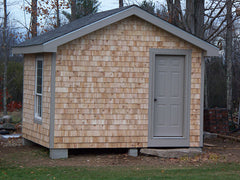Peony Information from Green Garden Farm
Paeonia (peony or paeony)
Paeonia, peony or paeony is a genus of flowering plants, the only genus in the family Paeoniaceae. They are native to Asia, Southern Europe and Western North America. Boundaries between species are not clear and estimates of the number of species range from 25 [1] to 40.[2] Most are herbaceous perennial plants 1.5 - 5 feet (0.5 - 1.5 metres) tall, but some resemble trees up to 5 - 10 feet (1.5 ? 3 metres) tall. They have compound, deeply lobed leaves, and large, often fragrant flowers, ranging from red to white or yellow, in late spring and early summer.
Peonies are perennial favorites in the flower garden. Few herbaceous plants can rival them for floral display and foliage. Their exquisite, large blossoms, often fragrant, make excellent cut flowers and the foliage provides a background for annuals or other perennials.
Peonies are extensively grown as ornamental plants for their very large, often scented flowers. Peonies tend to attract ants to the flower buds. This is due to the nectar that forms on the outside of the flower buds, and is not required for the plants' own pollination or other growth.
Hybrids between Tree Peonies and herbaceous Peonies, known as Intersectional or Itoh Peonies, are superb, long-lived plants with the large, exotic blooms and refined foliage of Tree Peonies, but with stems that die back to the ground in fall like herbaceous Peonies. Making crosses between these two groups was a horticultural feat that proved remarkably difficult to accomplish. The quest for this elusive marvel began in Japan in the late 1940s with Mr. Toichi Itoh, and was picked up by American breeders. Don Hollingsworth introduced 'Garden Treasure' and 'Border Charm' in 1984. Rodger Anderson, an amateur breeder in Wisconsin, spent 12 patient years carrying out crosses, finally hitting the jackpot with yellow 'Bartzella,' registered in 1986. Since then, other beautiful colors have been developed, but only a few have made it into commerce.
Planting and Site Requirements
Planting, transplanting and dividing peonies are best done in early fall but may be done in spring as soon as soils are workable. Each plant requires an area about three feet in diameter. Dig a generous hole, large enough to accommodate the roots and incorporate aged organic matter in the bottom. Place the peony in the prepared hole so that the eyes (small, red-colored buds) are one to two inches below the soil's surface. Backfill and water well.
Peonies may be left undisturbed for many years. A decline in flower production usually indicates overcrowding and the need for division. Carefully lift the clump and wash away the soil to expose the eyes. Using a clean, sharp tool, divide the clump into sections, each with three to five eyes and good roots. Replant immediately.
Peonies grow best in full sun, but will tolerate light shade.Peonies require winter cold to flower. To encourage flowering, plant on a northern exposure and do not mulch in the winter. Flower size will decrease due to root competition from nearby trees and shrubs. The planting site should have protection from strong winds, but be well aerated to reduce diseases problems. Peonies prefer a well-drained soil with a pH of 6.0 to 7.0. Roots will quickly rot in poorly drained soil; consider planting in a raised bed. Try to avoid locations where peonies have been grown before.
Please contact us for pricing and availability.
Our Walk-in Cooler
Walk-in cooler built for fresh cut flowers. A local florist shop went out of business and we were able to purchase there cooling system for this cooler which keeps the flowers at 32-34 degrees (F). When the peony flowers are cut they go directly into the cooler keeping the flowers fresh until shipment.

